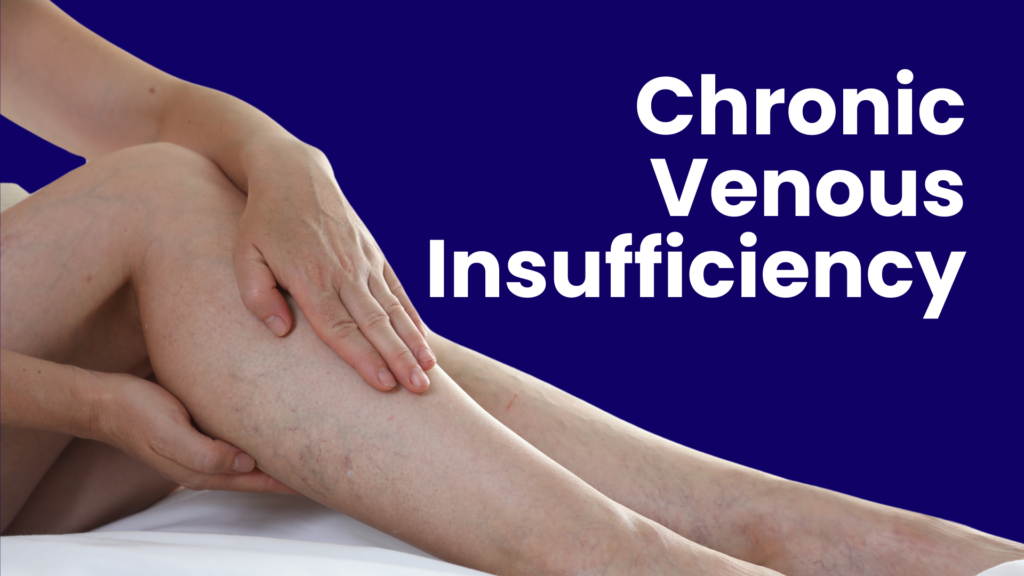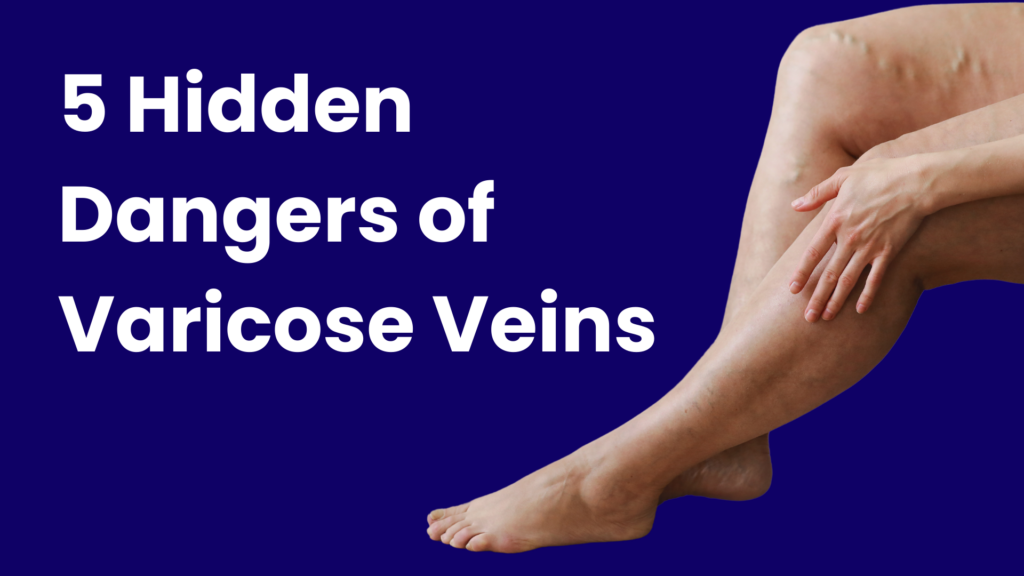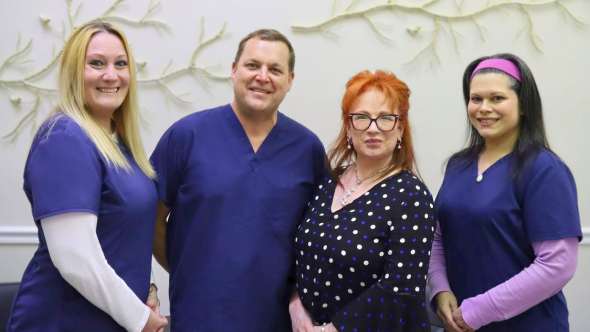Varicose veins affect millions of Americans, and there are many treatment options promising relief from this condition.
If you have varicose veins, you might have heard of radiofrequency ablation.
Radiofrequency ablation has existed for a long time – since 1931 – and over time, it has become a top treatment option for varicose veins. It even has a success rate of 92.6% after 3 years(1).
Are you considering radiofrequency? Learn about this popular procedure for varicose veins: it might be just what you need.
Table of Contents
ToggleWhat is Radiofrequency Ablation?
Radiofrequency ablation is when the doctor uses radio waves to produce heat. The catheter electrode delivers a high radiofrequency, heating the inside of the vein. This heat causes the vein to contract ( a “venous spam”), closing off the damaged vein(2).
Radiofrequency ablation, or RFA, replaced surgical procedures as the preferred varicose veins treatment. This outpatient procedure is easier and less painful, resulting in less downtime for the patient. RFA also uses a local anesthetic instead of general anesthesia, meaning patients can go home and resume activities afterward.
Fun fact: RFA doesn’t just treat varicose veins. It’s used in certain neurosurgical procedures and treatments for the liver, kidneys, lymph nodes, spleen, and lungs. Ophthalmologists and dermatologists even use it.
However, since its introduction in Europe and the United States in the early 20th century, RFA has been primarily known for treating varicose veins. (The process has improved a lot since that time!)
And the best part? It tackles the problem head-on. Supplements, creams, medications, and at-home remedies claim to help manage this condition. But RFA gets to the heart of the issue: right in the veins.
Is Radiofrequency Ablation right for me?
Radiofrequency ablation is often the best solution for those living with varicose veins.
If you experience the following symptoms, this may be a good treatment option. Ask your doctor about RFA if you’ve experienced:
- Pain in your lower limbs
- Bleeding (from varicose veins)
- Leg swelling
- Skin discoloration
- Ulcers or wounds in the lower legs (a sign of chronic venous insufficiency)
After discussing your symptoms, your doctor may perform a Doppler ultrasound to assess your vein health. From there, they will determine if radiofrequency ablation is your best choice.
How is Radiofrequency Ablation Done?
The Doppler ultrasound assesses vein health and helps determine which veins to treat. (No preparation is required for this ultrasound.)
Once completed, the doctor will drape and cleanse the leg to avoid contamination and apply a local anesthetic. The doctor will insert a thin tube into the vein. (You might feel a puncture sensation, but you shouldn’t feel any pain due to the anesthetic.)
Once inserted, the doctor turns on the radiofrequency generator, heating the catheter, which treats the vein. When the treatment is completed, the catheter is gently pulled from the vein.
Watch the video above for a visual demonstration of this process.
The catheter treats sections about 7-10 centimeters long for 20 seconds for each section. This procedure often takes less than an hour, depending on the number of veins to treat. Naturally, the bigger the vein issue, the longer the procedure will take(5).
Once the vein is completely treated and the catheter removed, pressure is applied to the entry point.
And that’s it! You’re on your way to better veins.
Who Should Not Try Radiofrequency Ablation?
While radiofrequency ablation has many positives, it is not always the best solution for all patients. Talk to your doctor if you’re experiencing:
- Veins that are too small for the catheter
- Veins that are too large to be ablated
- Pregnancy
- Difficulty walking (particularly stroke patients or those paralyzed)
- Aneurysmal venous reflux
- Poor general health(3)
In addition, make sure to provide a list of current medications and discuss other medical issues. Discussing past surgeries or illnesses you’ve had is crucial, especially anything vein-related.
Disclose bleeding problems, medications that increase bleeding risk, and conditions that may pose a risk to RFA. You may be asked to pause these medications before the procedure.
What are the Complications of RFA?
Pain
Pain is a common side effect of radiofrequency ablation but is less severe than other procedures. Patients often describe the pain level as 1 or 2 out of 10(4) post-procedure. Ibuprofen or acetaminophen can help with pain management.
Phlebitis
Phlebitis is inflammation at the treatment site. You might experience redness, swelling, and tenderness. This impacts fewer than 10% of patients and is manageable with anti-inflammatory medications, rest, or a cold compress.
Skin Discoloration
Skin discoloration, or hyperpigmentation, may occur. This stems from residual blood trapped in the veins. It often resolves itself in a few weeks.
To help prevent this side effect, a doctor may apply tumescence: a mixture of lidocaine (an anesthetic), saline solution, and sodium bicarbonate.
Paresthesia
You may experience paresthesia, or numbness, over the RFA site. This should subside after a few weeks.
Deep Vein Thrombosis
Deep vein thrombosis, or DVT, can develop in the deep calf and around the superficial veins. This is a rare side effect, impacting about 1 in 1000, but it is a serious one.
Compression stockings, local anesthetic, and moving your legs reduce risk. If you are considered high risk for DVT, your doctor may prescribe medications.
A high-risk patient might be someone with a history of DVT, someone over the age of 60, or someone on hormonal birth control or undergoing hormone replacement therapy.
During the Doppler ultrasound, the doctor will also look for thrombus, or blood clots, in the veins. If they detect clots, they can prescribe medication to reduce risk.
Endovenous Heat Induced Thrombosis (EHIT)
Rarely, a thrombus, or blood clot, will protrude into a specific vein called the femoral vein, which is in your thigh. This is due to a phenomenon called endovenous heat-induced thrombosis, or EHIT. This is avoided by using the correct catheter tip and inserting it correctly. (Rest assured, the medical professionals at Bucks County Center for Vein Medicine are aware of this!)
Recurrence
Rarely do treated varicose veins return after RFA. This is often caused by reflux from a tributary (a small vein that branches off the larger vein) or a perforator vein (connected to a superficial vein). However, this is less common with RFA than surgical procedures(6).
That’s why working with a trusted vein health expert and following proper post-op protocol is essential. These steps reduce your chances of developing complications from RFA.
Aftercare of Radiofrequency Ablation
The best part about radiofrequency ablation is that you can return to normal life as soon as you’re done. You will also be encouraged to start moving right away.
You’ll need to wear compression stockings for three days after the procedure to prevent blood clots from forming and to reduce inflammation. Properly fitted medical-grade stockings may be challenging to get on, but they should not be uncomfortable. (Don’t worry: you can remove them in the shower and when you go to bed!)
Walking around and being active is incredibly important. This will help you avoid serious complications like DVT.
Procedure follow-up can vary. Your doctor might ask you to visit within a few weeks to ensure the procedure went well.
However, if you experience the following after treatment, seek help immediately:
- Difficulty breathing, which worsens when you move
- Sudden cough and coughing up blood
- Sudden chest pain
- Calf pain
- Continuous bleeding in the procedure area
Conclusion
There are many varicose vein treatment options available. You’ll find many different creams, medications, and home remedies promising relief as you research treatment options.
However, these do not treat the underlying cause of varicose veins. Radiofrequency ablation gets right to the root of the problem, which is why it is a top choice for patients with varicose veins.
If you are looking for a solution with no downtime, less pain, a more affordable cost, and an overall better outcome meet with a vein specialist today and determine if radiofrequency ablation is the best option for you.
Bucks County Center for Vein Medicine offers radiofrequency ablation to those with varicose veins. Is radiofrequency ablation right for you? Book a consultation today and take the first step toward better vein health.
References
- Proebstle, T. M., Alm, J., Göckeritz, O., Wenzel, C., Noppeney, T., Lebard, C., Pichot, O., Sessa, C., Creton, D., & European Closure Fast Clinical Study Group (2011). Three-year European follow-up of endovenous radiofrequency-powered segmental thermal ablation of the great saphenous vein with or without treatment of calf varicosities. Journal of vascular surgery, 54(1), 146–152. https://doi.org/10.1016/j.jvs.2010.12.051
- Kayssi, A., Pope, M., Vucemilo, I., & Werneck, C. (2015). Endovenous radiofrequency ablation for the treatment of varicose veins. Canadian journal of surgery. Journal canadien de chirurgie, 58(2), 85–86. https://doi.org/10.1503/cjs.014914
- Medical Advisory Secretariat (2011). Endovascular radiofrequency ablation for varicose veins: an evidence-based analysis. Ontario health technology assessment series, 11(1), 1–93.
- Rasmussen LH, Lawaetz M, Bjoern L, Vennits B, Blemings A, Eklo¨f B. Randomized clinical trial comparing endovenous laser ablation, radiofrequency ablation, foam sclerotherapy and surgical stripping for great saphenous varicose veins. Br J Surg 2011;98:1079–87
- Merchant RF, Pichot O, Group CS. Long-term outcomes of endovenous radiofrequency obliteration of saphenous reflux as a treatment for superficial venous insufficiency. J Vasc Surg 2005;42:502–9; discussion 509
- Hinchliffe RJ, Ubhi J, Beech A, Ellison J, Braithwaite BD. A prospective randomized controlled trial of VNUS closure versus surgery for the treatment of recurrent long saphenous varicose veins. Eur J Vasc Endovasc Surg 2006;31:212–8



